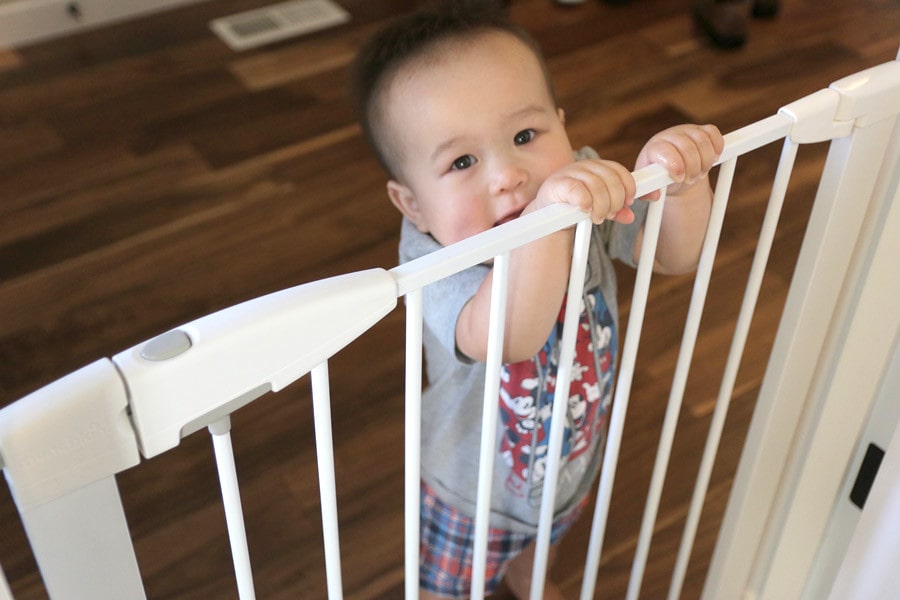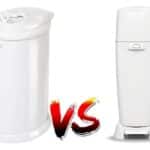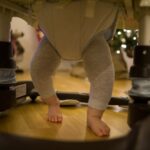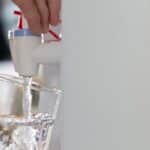As babies get older, they get curious. They want to see the world around them and learn how everything works. Their natural curiosity is a wonderful thing. It can help your baby develop a love for learning, and letting your son or daughter explore the world around them encourages independence later in life.
It’s important to let babies explore, but it’s also important that they are safe. Letting a child roam the house without taking proper safety precautions can lead to harm or fatal accidents. This is why baby proofing is important. Making sure that the home is properly baby proofed or that your baby has a safe place to play, such as inside a baby fence, can not only help prevent accidents, it can save their life. When considering baby proofing, it’s important to decide is a baby fence necessary for baby proofing, whether you want to baby proof, how you feel about a playpen and more.
In this article
Baby Proofing What Do I Really Need
What you need to baby proof your house depends on your house. For example, I live in an apartment. We don’t have stairs, so I don’t need to worry about that. If your home has stairs, you’ll need to make sure that the baby can’t accidentally fall down the stairs. Some houses have common things that parents need to watch out for, though.
View in gallery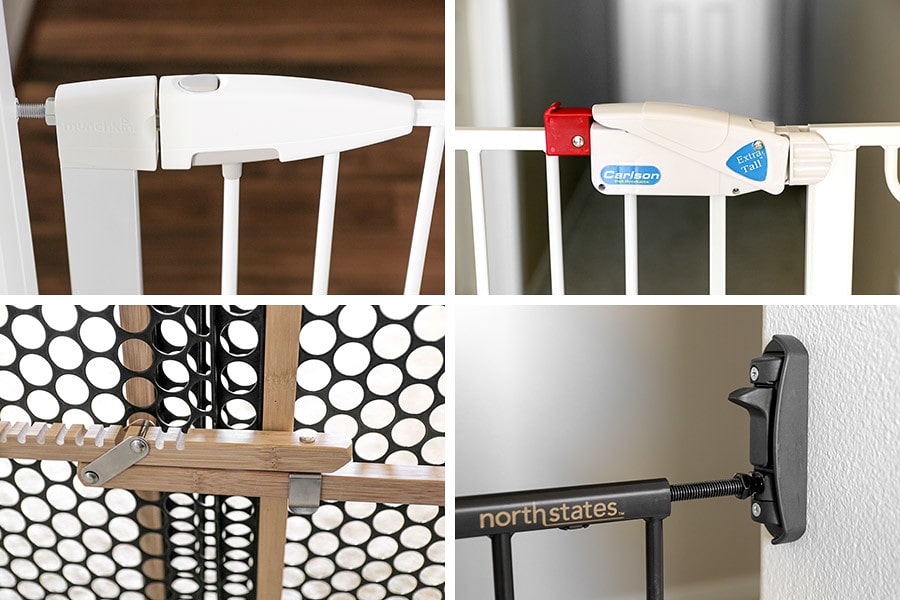
Outlets
Covering outlets is an important part of baby proofing. Babies can stick things into the outlet and accidentally electrocute themselves. Some parents rearrange their furniture to block outlets, and others get outlet covers. These plug into the outlet to make sure that little ones cannot stick anything else into the outlet.
Drawers and Doors
Some parents prefer not to use baby latches on all doors and drawers, and some parents will put a childproof lock on every door and drawer so that babies cannot get into anything. Whether you choose to baby proof every door, cabinet, and drawer or not is up to you. At the least, you need to baby proof the ones that could be dangerous. For example, baby proof the cabinet that has cleaning chemicals, the drawer that has sharp knives, etc. What you choose to do beyond that is up to you. If you’re concerned about a particular thing, baby proof it. It’s not possible for a baby to be too safe.
Tuck Away Cords
When baby proofing the house, tuck away the cords that are hanging from blinds. These can be a fall hazard for the baby, and the baby could pull on the cord, resulting in the blind falling on top of them and hurting them. Cords also can be a choking hazard. Put them up high so that the baby cannot reach them.
Poisons
It’s important to put every toxic chemical out of reach or in a childproofed cabinet before your little one starts crawling. It can be easy to miss a bottle of toilet bowl cleaner in the bathroom, and it can be even easier for a toddler to climb on top of the bathroom sink to get into the medicine. Walk or crawl around your house and make sure that chemicals and medications are tucked away safely.
There are plenty of other things that parents can do to baby proof their house, but these are the basics. After this, it’s up to you what you would like to baby proof. Some parents will consider the question is a baby fence necessary for baby proofing, and others will opt to simply block off rooms of the house. Let your parenting instincts, preferences and your baby’s needs guide you through the rest of the baby proofing process.
Check out this great video that includes baby proofing tips & hacks. There are several useful tips you won’t find anywhere else.
Playpen Vs. Baby Proofing
Everyone knows what a playpen is. For years they were a staple in every American living room. All three of my children had one. There is even a spot for one in the current living room for the grandson. Playpens and babies go together like bread and butter.
Some parents are using these as an alternative to baby proofing, however. This easy alternative requires less work for the parents, but it can also provide fewer benefits to the babies. When children are not allowed out of their playpen, they are often delayed because they do not run, jump and explore as much as children that are not confined to a playpen. Keep in mind that this only applies to children that move from their bed to a playpen and nothing more, which can be seen as neglect if their emotional needs are not being met.
A playpen, when used in moderation, can be a nice alternative to baby proofing certain rooms in the house, though. For example, instead of baby proofing the entire kitchen, you can put the baby in their playpen in the kitchen while you cook dinner. This helps them learn to play independently, and then children are safe when they are allowed to explore in another room of the house that is baby proofed.
When considering is a baby fence necessary for baby proofing, take into consideration that a baby fence can work like a playpen but it provides a much larger play area. These can also be used to block off sections of a room.
Playpens should not replace baby proofing, but they are a nice addition to it.
Baby Gate Between Wall and Couch
If you have that space in between your wall and couch, you’ve probably already started wondering how to block it off. If children are behind the couch, their fingers can get pinched, parents can’t see them and they can try to climb under the couch, which can be dangerous. Standard baby gates do not attach to the couch. Freestanding baby gates, however, will help you block off that awkward area. These gates do not require drilling and are a great idea. Some have rubber on the ends of the feet to help them stand up.
The primary downside to a freestanding baby gate is that it can be pushed or pulled down. If your little one is pulling themselves up to stand, they could easily pull down a freestanding baby gate. Use a kitchen chair or two to keep the gate secured in place.
Pipe Insulation Baby Proofing
Pipe insulation is a cost effective, easy way to keep babies safe. Parents are picking up pipe insulation and putting it along dangerous edges, such as countertops, sharp corners on tables and other places where furniture might be a hazard. This is far cheaper than picking up a baby proofing kit that includes foam padding. Pipe insulation is also known to last longer than cheap types of foam that might be sold in those kits. If you’re considering baby proofing, this is a great, budget friendly idea.
Are Toilet Locks Necessary?
Whether toilet locks are necessary depends on how much your child likes the toilet. Mine never touched it. There were no things thrown in the toilet, weird objects flushed, etc. However, they were also not allowed in the bathroom by themselves. Plenty of parents take this same approach and opt to keep the doors closed instead of using a toilet lock.
If your little one is going to be allowed in the bathroom and shows a fondness of playing in the toilet, a toilet lock is necessary. I wouldn’t buy one just yet, though. Instead, wait until the baby is older and see if you need one instead of wasting money.
How To Protect Baby From Stairs
Protecting a baby from the stairs is as simple as blocking off the stairs. Most people pick up a baby gate if they have stairs. If you plan on the baby being both upstairs and downstairs, it’s a good idea to grab one for the top and bottom of the stairs. Each set of stairs in the house should have its own baby gate.
View in gallery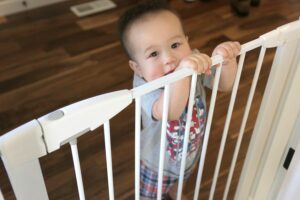
If you haven’t had a chance to pick one up yet and your little one is already crawling to the stairs, you can use almost anything to block the stairs until you get one. Boxes with heavy items so that the baby cannot push them, dining room chairs and laundry baskets are all great ideas.
Montessori Baby Proofing
View in gallery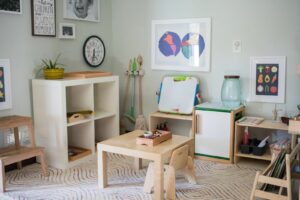
The Montessori method of baby proofing encourages parents to create a safe place for their children to play and explore. This area should be completely child proof so that babies feel safe and are able to let their natural curiosity guide their play throughout the day. If you’re wondering whether a baby fence is necessary for baby proofing, it is for a Montessori play area. These are used to section off portions of a room to create a space that is just for the baby. Baby proofing includes:
- A floor bed
- Age appropriate toys
- Low shelves so babies do not feel the need to climb, which can be unsafe
- Outlet covers are often used
- A baby gate to separate their space from the rest of the house
Baby proofing the rest of the house can be frowned upon as parents are encouraged to teach children what to do, and what not to do. It’s important to remember that this general rule also has boundaries. For example, all parents should put up dangerous chemicals, but locking the fridge so that they cannot open the door is not ideal. Remember, if it is unsafe it should be childproofed. If it is simply an inconvenience, parents should try to take the time to teach their children appropriate behavior.
Minimum Baby Proofing
Minimum baby proofing means that you are doing the least amount possible when baby proofing the house. Old school parents often opt for minimum baby proofing. Most of us grew up around tables with sharp edges, we learned not to get into the fridge, and we are still doing wonderful today. Minimum baby proofing is simply baby proofing to keep your little one safe, and nothing more. This is often the style of baby proofing that is seen in Montessori households too.
Making a Decision Not to Baby Proof
Many parents disregard the thought of minimal baby proofing and opt for no baby proofing. Instead, children are taught what they can, and cannot, do as they attempt to do it. This method is far more time consuming for parents in the beginning. However, when you choose not to baby proof, your child usually learns what not to do sooner. Keep in mind that it does depend on the child.
Baby proofing is a matter of personal choice. I had one baby gate and a playpen when my daughter, who is now 16, was little. My son had the same minimal baby proofing. They were not allowed in the kitchen or bathroom without an adult, so that was not an issue for us. The littlest, however, did require foam padding around the tables. She also had a playpen, but quickly learned how to scale over baby gates making them pointless. This was rather time consuming for myself, though, and not every parent has the kind of time that they want to spend hours telling their child no to everything in the house. How much time and patience you have will play a role in how you choose to baby proof your home.
Your child will also play a large role in what baby proofing methods you opt for. As you can see, my older two did not require the foam padding around sharp corners. The littlest was, and still is, a bit more rambunctious and had more than her fair share of falls, bumps, and bruises. Other children will take months to give up on trying to put things in the outlet while some may not even notice they are there. This is why the wait and see approach is commonly used by parents.
Regardless of what baby proofing method you use, it’s important to remember that it is your choice. As long as your little one is safe, that’s what counts.

